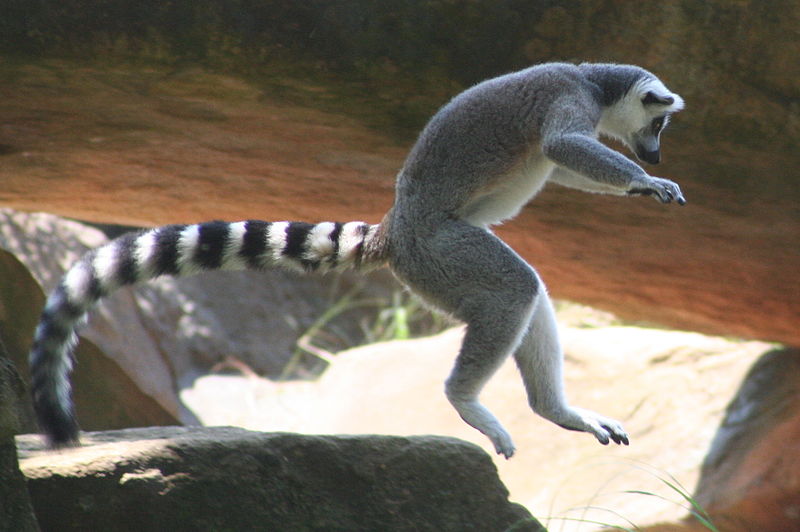A near-threatened species of lemurs—the ringed-tailed lemur—lives on the island of Madagascar.
They are threatened because their areas of habitat are being converted to farmland (or are burned to produce charcoal).
These lemurs—whose tails are longer than their bodies—are endemic to Madagascar. Vocal primates, they are able to jump from tree to tree. Females typically produce a single offspring.
Among other things, ring-tailed lemurs eat ... dirt! Scientists think that process adds sodium to their diets (plus it protects them from “gut parasites”).
In captivity, the ringed-tail lemurs live comparatively well. They do well in zoos where they can live nearly 30 years. In the wild, they have a typical life span of 15-20 years.
There’s something else to know about the ring-tailed lemur. They smell really bad—thanks to their strong and powerful scent glands—especially during mating season. These lemurs also use their scent to communicate with each other and to defend themselves against potential predators (like Madagascar buzzards).
This photo, by RadioFan, depicts a ringed-tailed lemur (Lemur catta) which is leaping from place to place. This type of lemur is only found in the southern part of Madagascar.


